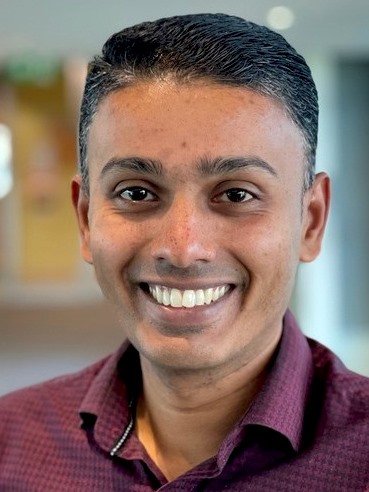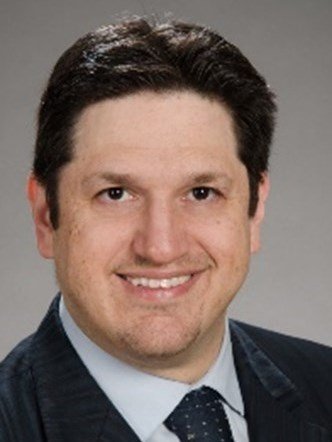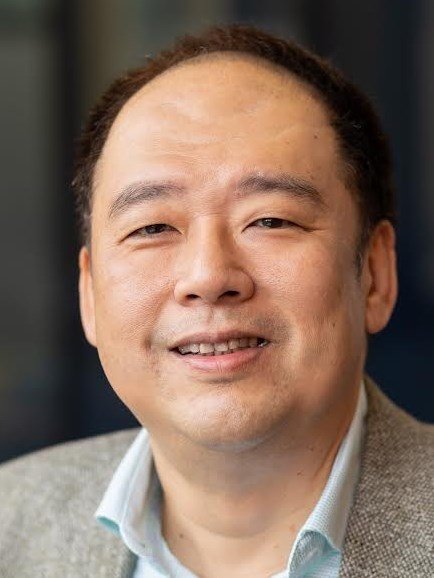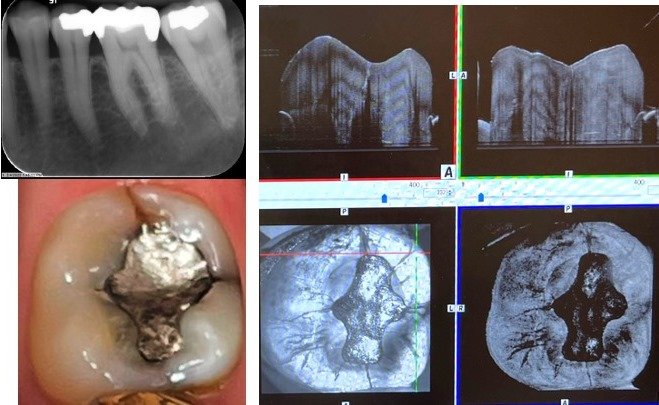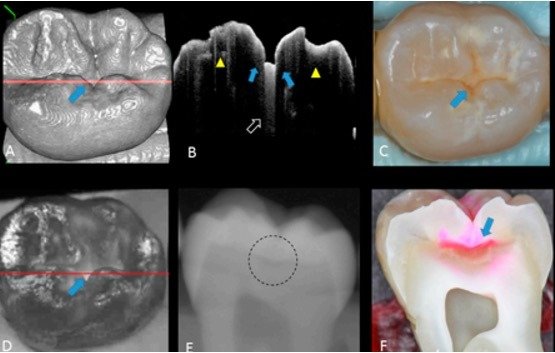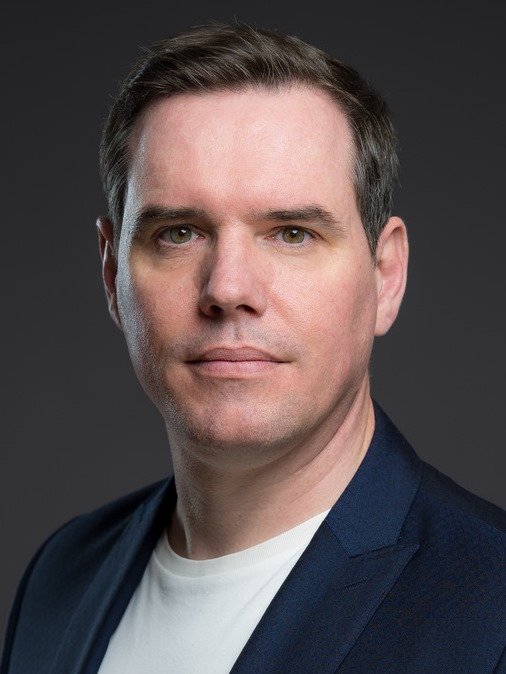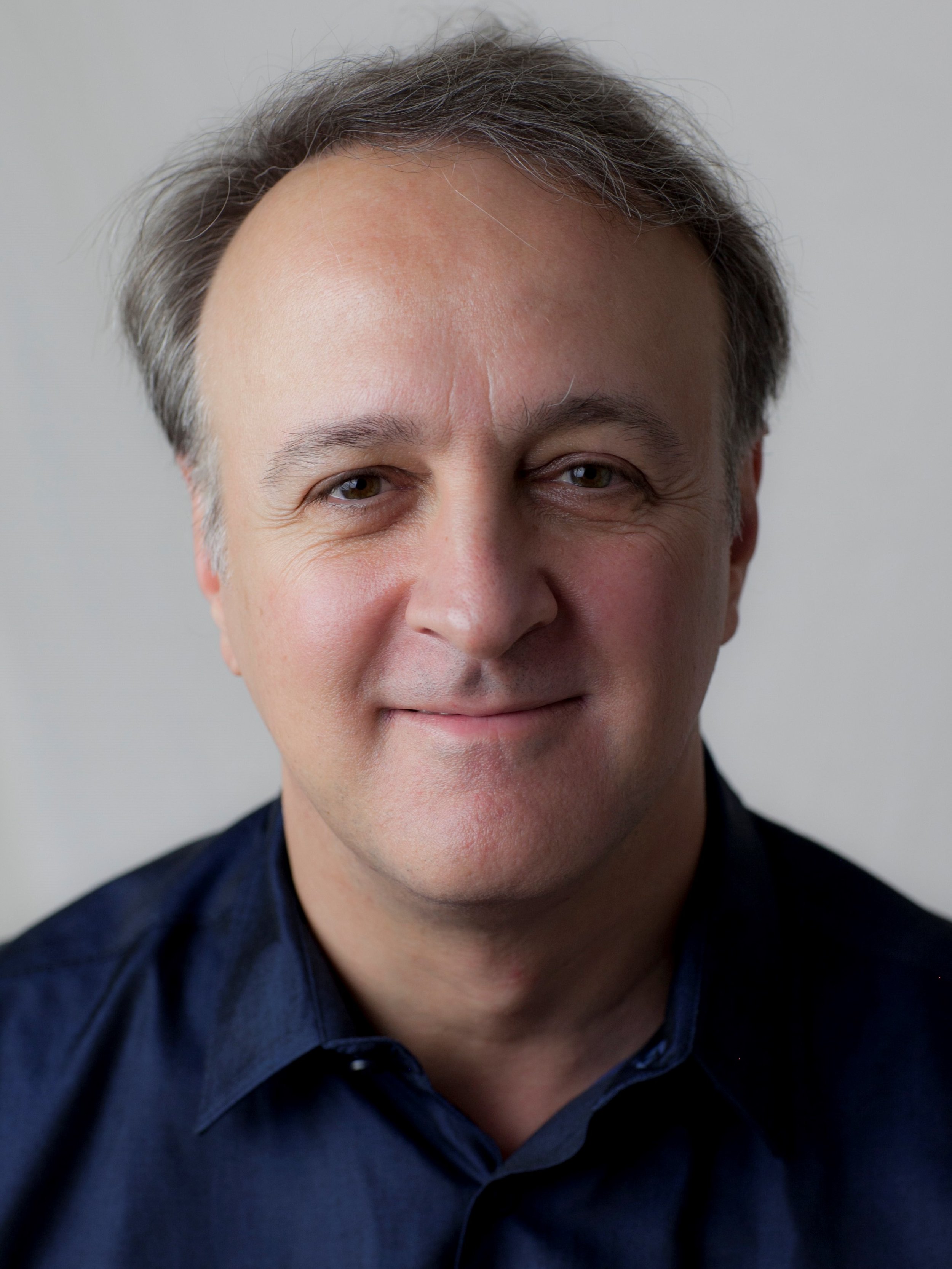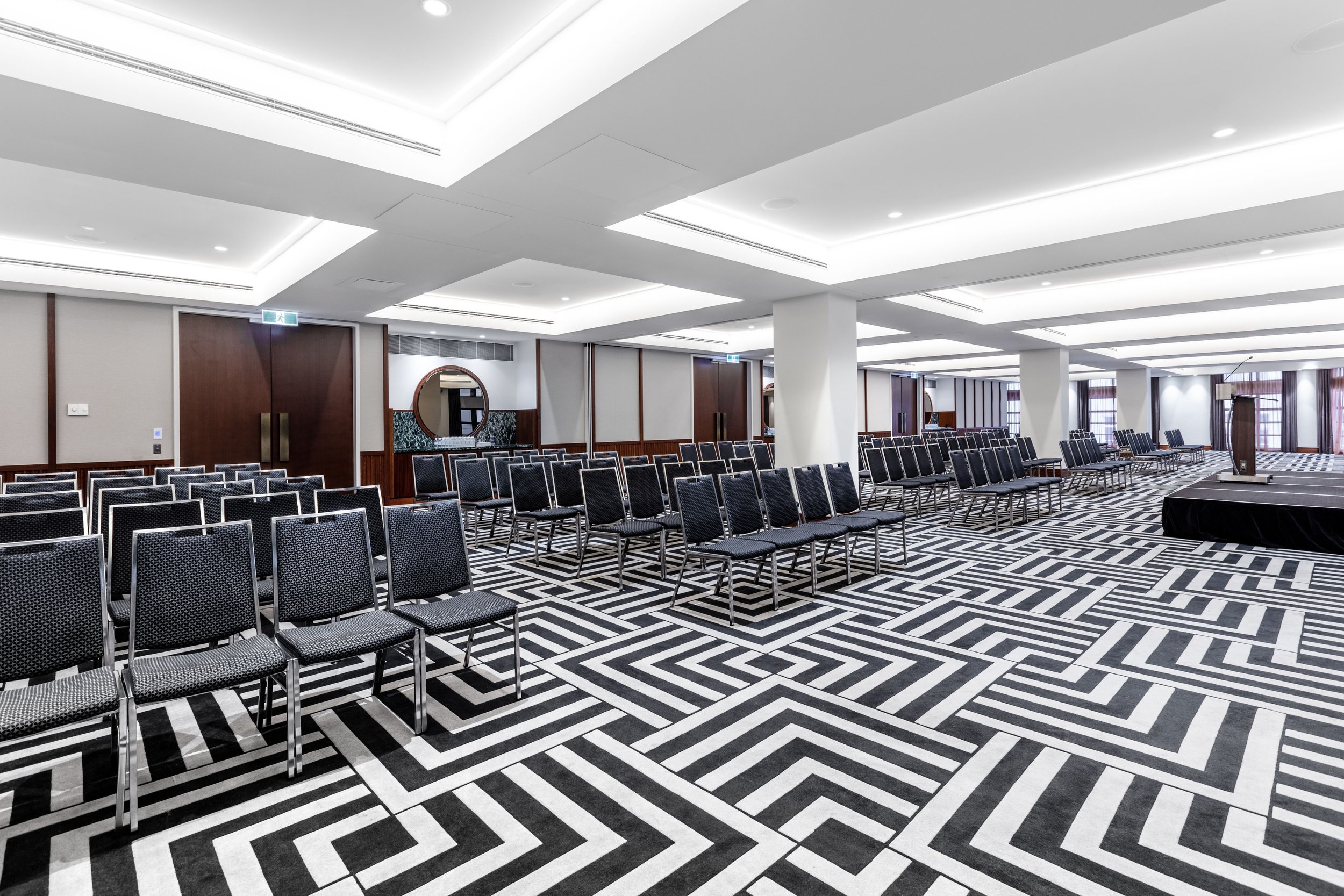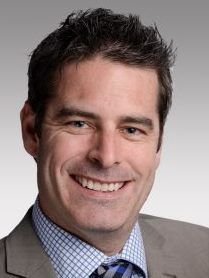Scientific Program
Kimpton Margot Sydney
Conference Centre Mezzanine level
Pre-Conference Workshop
Wednesday 24 July 2024 1230-6pm
Main Program Day 1
Thursday 25 July 2024 830am-6pm
Main Program Day 2
Friday 26 July 2024 830am-530pm
Main Program Day 3
Saturday 27 July 2024 830am-12pm
Wednesday 24 July
Pre-Conference Workshop
1230 Lunch
Digital and Data Science Foundations
Moderator - Dr Ken Hooi
130
Dr Ken Hooi & Dr Sundar Varadharajan
Science of Digitally Supported Dentistry
215
Dr Graham Carmichael
Digitally Supported Prosthodontics
3 Break
330
Dr Ken Hooi
Feature Engineering, Predictive Modelling and Health Digital Twins
415
Dr Adam Hamilton
Products, Systems and Services
5
Discussion
Thursday 25 July Main Program Day 1
830
Dr John Cho
Welcome - AANZP President
Dr Gerry Clausen
Tribute to Dr John Locke
Session 1. Health Care Disruptors
Moderator - Dr Gerry Clausen
840
A/Prof Alireza Sadr PhD
The John Locke Oration
Optical Coherence Tomography I
920
Adj/Prof Clarence Tan PhD
Artificial Intelligence in Health Care
950
Panel
10 Break
Session 2. Clinical Excellence - Diagnostics
Moderator - Dr Ken Hooi
1040
A/Prof Alireza Sadr PhD
Optical Coherence Tomography II
1120
Prof Hans Zoellner PhD
Dentistry - Gateway to Surgical Automation
1150
Dr Martin Gale PhD
Artificial Intelligence in Endodontic Diagnosis
1220
Dr Sen Le
Eyes of AI
1240
Panel
1 Lunch
Session 3. Clinical Excellence - Interventions
Moderator - Dr Adam Hamilton
2
Sascha Hein PhD(Candidate)
Instrumental Colour Measurement
230
Dr David Roberts
Digital Case Management and Outcomes
3
A/Prof Max Guazzato PhD
Dynamic Surgical Navigation
330
Panel
340 Break
Session 4. Clinical Excellence - Maintenance
Moderator - Dr Graham Carmichael
420
Dr Carolina Perez Rodriguez
Implants After 15 Years Service
450
Dr Stephen Travis
Occlusal Active Monitoring
520
Prof Jim Ironside PhD
Complications
550
Panel
6-8
Welcome Reception
Wilmot Bar
Friday 26 July Main Program Day 2
Session 5. Education Technologies
Moderator - Dr Ken Hooi
9
Dr Scott Bolland PhD
Expert and Generative Education Technologies
940
Panel
Prosthodontic EdTech Opportunities
1030 Break
Session 6. AANZP Annual General Meeting
11
Dr John Cho AANZP President
Prof Sunyoung Ma AANZP President-Elect
1230 Lunch
Session 7. AI Ethics and Governance
130
Adj/Prof Clarence Tan PhD
Health Technology Investment
2
Dr Ken Hooi
Explainable AI
Session 8. Research Excellence
Moderator - Professor Peter Wilson
225
Dr Anny Huang
Comparing the Clinical Outcomes of Full Contoured Zirconia Implant Supported Single Crown on Two Different Design Concepts (direct to fixture versus abutment level): A Randomised Clinical Study
Postgraduate Research - DClinDent(Prosthodontics) University of Melbourne
240
Dr Cindy Zhou
Evaluation of digital and analogue workflows for smile design in prosthodontic planning; an assessment of clinical outcomes and patient satisfaction throughout treatment stages
Postgraduate Research - DClinDent(Prosthodontics) University of Melbourne
255
Dr Casey Walsh
The influence of scan body design on the accuracy of digital full arch implant scans
Postgraduate Research - DClinDent(Prosthodontics) University of Queensland
310
Dr Hamza Masood
Angle Correction in Implant Dentistry – A Systematic Review
Retrospective Evaluation of 5–10-year survival and radiographic bone-level changes in single maxillary implant restorations: Dual-Axis versus Uniaxial Dental Implant Analysis
Postgraduate Research - DClinDent(Prosthodontics) University of Sydney
325
Dr Ricky Lim
Aesthetic outcome of immediate implants in the aesthetic zone with the socket shield technique, using the Pink Esthetic Score
Postgraduate Research - DClinDent(Prosthodontics) University of Sydney
340 Break
420
Sascha Hein PhD(Candidate)
Perceived v Measured Colour Differences in Dentistry
450
Densen Cao PhD
Science and Practice of Reversible Dental Adhesives
520
Panel
645-745
Pre-Dinner Drinks
ft. Presidents’ Addresses
& FAANZP Certificates
Wilmot Bar
745-11
Gala Dinner
Luke’s Kitchen
Saturday 27 July Main Program Day 3
Session 9. Amelogenesis Imperfecta
Moderator - Dr Louis Kei
850
Dr Chrys Antoniou
Congenital Malocclusions
920
Dr Soni Stephen
Amelogenesis Imperfecta I - Early Management
950
Dr Graham Carmichael
Amelogenesis Imperfecta II - Rehabilitation
1020
Panel
1030 Break
Session 10. Prosthodontics 2026
Moderator - Professor Sunyoung Ma
1130
Panel Discussion
1230
Takeaway Lunch
Close of BSM
Wednesday 24 July
Pre-Conference Workshop
Digital and Data Science Foundations
Our aim of this workshop is to align interested delegates to a standardised foundation literacy in digitally supported services and data science for application in clinical practice, as well as preparation for several presentations of the Main Program.
We are all are familiar with digital technical processes, but what about the science behind the data we are working with, and how does each data unit and digitally supported process compare with previous techniques? How accurate are data fusion techniques in planning implant and occlusal reorganisation cases? How can we critically evaluate scientific literature of digital and artificial intelligence-machine learning systems? How can we spot a good product from a bad one?
The PCW takes these topics head-on, and via a good old journal club, case presentations, didactic lectures, and product reviews. It is convened by us, as the Scientific Committee, and is open for all BSM delegates.
2024 AANZP Scientific Committee
Dr Graham Carmichael
Dr Adam Hamilton
Dr Sundar Varadharajan
Dr Ken Hooi
Thursday 25 July
Main Program Day 1
Session One. Health Care Disruptors
Optical Coherence Tomography is the heir apparent technology of intraoral scanning, and may even replace some dental radiology. Earliest reports of its use in dentistry date back to the 1990s, and a resurgence in research interest across all dental disciplines has occurred this past decade. OCT systems use low coherence interferometry of white light, and oral structures are detected around the infra-red wavelength. Some authors claim sections of 3-4mm depth. Centres of excellence in OCT research are located in Japan, USA and UK. Ophthalmologists have used OCT in routine practice for retinal scanning also since the 1990s. The benefits to their patients are indisputable, with previous methods involving direct visual interpretation. For example, single-unit micron resolution is essential for their diagnosis of macular degeneration, and OCT captures its image quickly and with no ionising radiation.
A/Prof Alireza Sadr, University of Washington and Tokyo Medical and Dental University, international leader in OCT research, will deliver the 2024 AANZP John Locke Oration, “Optical Coherence Tomography I: Science”. Having worked with OCT for over 15 years, his rarified expertise in this intriguing field is our privilege. Last year, Alireza presented at the Academy of Prosthodontics 2023 Meeting, “Transforming Clinical Prosthodontics with Digital Innovations: A Systematic Analysis of the Digital Workflow”, with a 40-minute lecture, “State of the Art Structural Adhesive Dentistry: Diagnosis and Management”.
Alireza received his DDS degree from the National University of Iran (SBMU), and completed PhD with advanced training in operative dentistry in Tokyo Medical and Dental University, mentored by Prof Junji Tagami in 2008. He has focused on advanced technology research, mainly dental adhesives and fiber-reinforced composites, and optical coherence tomography (OCT) imaging for non-invasive diagnosis of caries and cracks. He is currently the director of Operative Dentistry courses at UW, while running the research laboratories and practising dentistry. A/Prof Sadr received the UW Faculty Award for his operative courses over three consecutive years. He has published over 200 scientific articles. In 2022, A/Prof Sadr received the International Association for Dental Research Mid-Career Award (The Bayne Award) for his significant contribution to the science and application of dental materials research. Alireza is the recipient of the 2023 Rothwell Distinguished Teacher Award for outstanding and innovative teaching at UW.
Adj/Prof Clarence Tan, Gold Coast Polymath, will present us with credible insights in Artificial Intelligence in Health Care research, products and services.
Clarence is a futurist and a renown global speaker in the areas of exponential technologies, ethics in AI, applications of AI and the future implication impacts of technologies.
He is also the co-founder of the following companies:
1. Exponential Positive Impact Capital (EPIC), a social impact revenue sharing investment platform connecting impact investors to social impact projects.
2. Abby by Gogotech.co, the makers of affordable and portable smart wheelchairs and a Techstars’ Future of Longevity company, in partnership with Pivotal Partners, a Melinda French Gates company, and
3. SmartAIConnect, an AI company that has a platform connecting AI applications in computer vision to camera users with proper compliance and governance policies.
He was the inaugural Asia Pacific Ambassador of Singularity University at NASA Ames Research Park, the Global Ambassador and Board Advisor for Purpose Alliance and OpenExO, an academic, an investment banker and has been involved in a number of start-ups as a founder, mentor and investor.
His Massive Transformative Purpose (MTP) is to seek, share and apply knowledge to progress humanity.
Clarence has been an invited keynote speaker in a number of events including the APEC Forum in China, World Bank in Washington DC, United Nations in NYC, Mongolia and Bangkok, Deloitte Global Tax and Innov8rs Conference in Bangkok, the Asian Business Angels Forum, Global Mobile Internet Conference in China, Africatech in Cape Town, Health Informatics Conference in Australia, TEDxYouthTCIS Shanghai, TEDxYouth AB Paterson in Australia, TEDxYouth KL in Malaysia to over 800 delegates, the Awesomemest Fest in Bali, the Global Investment Panel for Singularity University at NASA Ames Research Park, the London Business School Alumni event in Singapore and the World Computer Congress in Brisbane.
He has run workshops for the South Korean government on exponential technologies and organisations. He received the Queensland government’s Entrepreneur-in-Residence Fellowship for 2010 and had been inducted into the Queensland Science and Innovation Champion Hall of Fame in 2014 as a Queensland Innovation Champion.
He runs a private equity fund and was an Adjunct Professor and Associate Dean at Bond University and currently an Adjunct Professor at Griffith University on the Gold Coast of Australia. He was also on the IT Board of Advisory for Southern Cross University.
Clarence obtained his Bachelor of Science in Electrical Engineering (Computers), a Master of Business Administration (Finance), and a Master of Science in Industrial and Systems Engineering from the University of Southern California, Los Angeles, US and a PhD in Artificial Intelligence Applications in Finance from Bond University, Australia. He is an alumni of Singularity University (SU), a benefit corporation based on NASA’s research campus in Silicon Valley, successfully completing the Graduate Studies Program in 2011 as the team leader for the CorruptionTracker project.
He is a Fellow of the Australian Computer Society (FACS) and a Fellow of the Financial Services Institute of Australasia (F Fin). He has a number of academic publications including a book, book chapters and peer-reviewed papers in the area of soft computing and mobile applications.
Clarence holds a number of patents in mobility technology globally. He has been an invited keynote speaker in a number of events including the APEC Forum in China, World Bank in Washington DC, United Nations in NYC, Mongolia and Bangkok, Deloitte Global Tax and Innov8rs Conference in Bangkok, the Asian Business Angels Forum, Global Mobile Internet Conference in China, Africatech in Cape Town, Health Informatics Conference in Australia, TEDxYouthTCIS Shanghai, TEDxYouth AB Paterson in Australia, TEDxYouth KL in Malaysia to over 800 delegates, the Awesomemest Fest in Bali, the Global Investment Panel for Singularity University at NASA Ames Research Park, the London Business School Alumni event in Singapore and the World Computer Congress in Brisbane.
Clarence has run workshops for the South Korean government on exponential technologies and organisations.
A/Prof Alireza Sadr PhD
2024 AANZP BSM Keynote Presenter
Adj/Prof Clarence Tan PhD
OCT Images - A/Prof Alireza Sadr PhD
Thursday 25 July
Main Program Day 1
Session Two. Clinical Excellence - Diagnostics
This session coalesces some technologies and innovations at the frontier of diagnostic services in dentistry.
A/Prof Alireza Sadr will take us deeper into the world of OCT, exploring its relevance in diagnostic applications.
Professor Hans Zoellner, Oral and Experimental Pathologist (University of New South Wales and Sydney University) and Owner of Strongarch - a company providing education, research and consultancy services – will introduce us to his current research of automated dental examination, and its potential as a gateway towards automated dental and general surgery.
Dr Martin Gale, Melbourne Endodontist and Member of the Australian Dental Association Dental Informatics and Digital Health Committee, is a distinguished member of the specialist endodontic community whom designed a neural network for endodontic diagnosis in 2016. In this presentation, he details trending concepts in artificial intelligence systems in endodontic diagnosis.
Dr Sen Le, Sydney Dental Surgeon, will share his clinical, technological, research experiences as a Founder, Developer and Chief Clinical Officer of Eyes of AI, a commercial radiological diagnostic service which supports Dentists with patented systems based on neural networks.
Robotic System Images - Prof Hans Zoellner PhD
A/Prof Alireza Sadr PhD
2024 AANZP-BSM Keynote Presenter
Dr Martin Gale PhD
Prof Hans Zoellner PhD
Dr Sen Le
Dynamic Surgical Navigation Images - A/Prof Max Guazzato PhD
Thursday 25 July
Main Program Day 1
Session Three. Clinical Excellence - Interventions
AANZP is joined by Sascha Hein, acclaimed Master Dental Technician and Ceramist. Sascha is founder of eLAB and CEO of Emulation Sascha Hein. He is a PhD Candidate with Leeds University School of Design, with research focusing on the optical appearance of dental hard tissues and materials as well as tooth shade management and communication in dentistry. Sascha will discuss the clinical sciences of colour in prosthodontics, and eLAB_prime, his automatic tooth detection and shade measurement service based on artificial intelligence technology.
"Navigating the complexity of shade matching: Exploring the potential and limitations of instrumental color measurement in restorative dentistry"
Achieving precise shade matching remains a persistent challenge in restorative dentistry despite advancements in instrumental color measurement techniques. In this lecture, we delve into the intricate landscape of shade matching, considering both the promise and the obstacles encountered in clinical practice. We scrutinize the human elements involved, such as the skill and experience of dental ceramists, alongside the intrinsic variability in natural tooth color. Additionally, we explore the limitations posed by shade guides and the inherent disparities in optical properties among dental materials. By illuminating these complexities, this presentation aims to provide valuable insights into optimizing shade matching processes and enhancing clinical outcomes in prosthodontics.
Digitally supported prosthodontic services have been the focus of discussions at all recent AANZP Biennial Scientific Meetings. These have included presentations and panel discussions of local and international speakers on intraoral scanners, CAD, milling, printing, materials, implant innovations, education, and workflows. For 2024, AANZP brings Dr David Roberts, Brisbane Prosthodontist, with a formidable reputation amongst us as a comprehensive and progressive clinician, having had digital techniques incorporated in his practice for over 15 years. David will discuss the why and how of his digitally supported services, sharing workflows in patient case management and outcomes.
Implant surgical navigation was introduced to the international profession around twenty years ago as a guiding technique for the improvement of accuracy of placement. History shows however, that static surgical guides, ranging from those produced in a dental laboratory to CAD-CAM appliances, have dominated procedural evolutions over this era. In 2018, AANZP heard from Dr Chris Evans, Melbourne Prosthodontist, of his experiences in navigation and other guided surgery techniques. Recent advances in imaging technologies and data synchronisation and fusion have led to its rebirth, with current systems now known as dynamic navigation.
A/Prof Max Guazzato, Sydney Prosthodontist and Associate Professor of Prosthodontics (University of Sydney), has been surgically placing implants for over 30 years. His professional life spans across private practice and all levels of academic operations with Sydney Dental School, including lecturing, clinical supervision and research. His scope of surgical practice in oral rehabilitation, and research in materials and clinical techniques is vast, and he has used all published techniques of surgical guidance for patients. Max will share his experiences with dynamic surgical navigation and discuss its place in our future.
Sascha Hein PhD(Candidate)
Dr David Roberts
A/Prof Max Guazzato PhD
Thursday 25 July
Main Program Day 1
Session Four. Clinical Excellence - Maintenance
Maintenance processes are – fundamentally - applied forms of diagnosis and interventions. Active monitoring of occlusion and implants and their restorations are bread and butter of our practices, and every Prosthodontist has their own unique system of managing complications.
Implants have been a significant part of our work, education and all AANZP Meetings. Peer reviewed publication of clinical outcomes beyond 15 years across the profession is by contrast, not significant. We live and operate in an era where we see more and more patients treated 15-30 years ago, either by ourselves, those known to us, or otherwise. Proliferation of diagnostic and operative hardware, software and processes during this time has simultaneously expanded maintenance assessment and management considerations.
Implant novel concepts that have become routine care require specific maintenance diagnosis and interventions. The indications for prognosticating 15 years or more to our patients, and interested third parties such as insurance schemes, are a practice reality for all of us. Finally, the next 15 years ahead of us may well see the emergence of mesenchymal stem cells as a reasonable alternative to implant therapy.
Dr Carolina Perez Rodriguez, Melbourne Prosthodontist and APS(VB) President, will share both published literature and concepts that she utilises in her practice, for implant treatment outcomes and prognosis of 15 years and beyond.
Active monitoring of occlusion is an essential component to our maintenance procedures for specifically assessing for morphological changes of individual units of teeth and restorations, occlusal schemes of treated dentitions and splints, dentoalveolar remodelling, correlating occlusal changes with temporomandibular disorders and treatments, or identifying an unstable occlusion as an independent risk factor or co-morbidity upon diagnosis of a related complication.
Commercial CAD systems which record occlusal schemes via colour and contour imaging have emerged amongst recent generations of digital technologies. The case for such a resource in our practices seems strong, but how can they contribute to our work, and - more importantly – are they useful yet?
Dr Stephen Travis, Sydney Prosthodontist, will discuss how he has been actively monitoring patient occlusions in specialist private practice for the past 30 years, through the eras of ceramics, implant and digital disruptions in prosthodontics.
As professionals we attend complications of our processes, and as specialists we are often requested to attend patients treated by other clinicians. We are proud to welcome back to the AANZP podium Professor Jim Ironside, Sydney Prosthodontist and Professor of Prosthodontics (Charles Sturt University), to share his thoughts on managing complications in prosthodontic practice. Jim has over 45 years of professional experience. With a strong sense of health care and community, he has led a full and distinguished career in prosthodontic practice, a parallel and synergistic academic career across three different universities and all dental award degrees, an enduring commitment to research, and a prolific contribution to continuing professional development for Australian dentistry.
Dr Carolina Perez Rodriguez
Dr Stephen Travis
Prof Jim Ironside PhD
Friday 26 July
Main Program Day 2
Session Five. Education Technologies
For us as individuals, education in prosthodontics is life long. As Prosthodontists, our journey of professional and specialist training follows a sealed path laid by our founding AANZP pioneers over 40 years ago, maintained ever since by our leaders, scholars and everyday private practitioners – all with the same sense of collegiality and commitment. Our continuing professional development journey, as a body of specialists, is instead a broad, seemingly infinite landscape of activity - and the mix of CPD consumption for ourselves and teaching of others is a common feature of our working lives.
Much like our clinical services, automation in education can assist and support our professional and personal pursuits. Our distinguished guest speaker, Dr Scott Bolland, Executive Coach, Education Technologist, Cognitive Scientist and International Keynote Speaker, will share some of his concepts and works that have transformed school education systems with neuroscience principles and expert and generative artificial intelligence applications.
For further information of Dr Bolland, and to view his brilliant TED Talk, please visit:
https://scottbolland.com/#services
https://www.youtube.com/watch?v=_cYIvfS-knA
The potential to apply expert and generative AI systems in prosthodontic education and training is large. Dr Ken Hooi will introduce some prosthodontic education technology ideas for AANZP, and a robust panel discussion is anticipated, which will include participation by Standards and Examination and Curriculum Committee Chairs.
Dr Scott Bolland PhD
Friday 26 July
Main Program Day 2
Session Six. Annual General Meeting
AANZP’s business meeting available only for Members
Friday 26 July
Main Program Day 2
Session Seven. AI Ethics and Governance
When it comes to disruptive health technology and innovation in everyday life, the human response will always include queries of why/where/who/when/how/how-much, of both sides of the benefits-risks consideration. In community and business terms, this can be explored as investment and ethics-governance. Add to that, the recent surge in personalised health systems raises many questions for our future as providers and consumers of health care.
Adj/Prof Clarence Tan returns to discuss investment, ethics and governance of artificial intelligence health technologies and innovations at a private organisational level and that of the community and governments. He has specialised capabilities and functioning expertise in both areas of investment and governance.
Dr Ken Hooi will introduce Explainable AI, a technology which can turn the elusive, “black box”, of machine learning systems, into a, “white box”. Its technical description will be outlined, as well as its use as a critical tool in enabling us - as consumers and investors of AI systems - understand better what we are buying into.
Adj/Prof Clarence Tan PhD
Friday 26 July
Main Program Day 2
Session Eight. Research Excellence
Prosthodontic research functions both at the leading edge, and in the reflection of our quest for better clinical services to our patients.
The pairing of AANZP with ANZ DClinDent(Prosthodontics) programs is the true interface between our specialty and our future. This traditional session has invariably brought thought provoking discussion of topics from exciting developments in materials science, through to critical observations of patient care.
Nominated ANZ Prosthodontic Postgraduates will present their research topics with ample time allocated for discussion. A prize will be awarded to the best presentation, judged by AANZP Executive.
Sascha Hein returns to the podium to reveal his work with science of optical appearances.
Abstract:: Perceived vs. measured color differences in dentistry
Achieving accurate color matches in prosthodontics, especially for shade-sensitive restorations, presents a significant challenge. Recent trends have seen a resurgence in using instrumental shade measurement to support more consistent shade matching outcomes. However, discrepancies between these measurements and our visual perception can result in restorations that look mismatched, even when instruments suggest a close color match. This presentation explores a study focused on refining color difference equations to enhance the precision of dental color measurement tools. Through visual scaling techniques, we aimed to align instrumental measurements with the visual perception of expert observers. The study’s findings offer insights into how device performance and the choice of equation can affect visual accuracy, leading to substantial improvements. This session will discuss our approach, key discoveries, and their implications for dental practice, providing attendees with strategies to improve aesthetic results in dental restorations.
Science and Practice of Reversible Dental Adhesive. Bonding and de-bonding dental prostheses on command are amongst the most desirable technologies that practitioners want in their daily practices. The researchers at the CAO Group have developed the world’s first reversible dental adhesive by using a diode laser and specially engineered ingredients in resin adhesive. This presentation describes the science and practices of reversible dental adhesive in fixed orthodontic appliances, sequential aligner attachments, temporary crowns, zirconia and other ceramic crowns, implant abutments, implant crowns, and others.
Densen B. Cao received his PhD and ME from the University of Utah, USA and MS from Jinlin University, China. He has made contributions to dentistry with his inventions including LED dental curing light, compact diode lasers, teeth whitening thickener (PVP), new generation of teeth whitening strips, retrofit LED dental chair light, laser curing light, digital vision headset, method of disinfecting canal, reversible adhesives, and others. He heads The Cao Group Inc and his inventions have been used in everyday dental practices with the aim to make dentistry easier, faster, and better.
Sascha Hein PhD(Candidate)
Densen Cao PhD
Saturday 27 July
Main Program Day 3
Session Nine. Amelogenesis Imperfecta
Mineralisation defects like amelogenesis imperfecta (AI) are often of hereditary origin. Optimal management consists of early diagnosis and restorative treatment in the mixed dentition to improve aesthetics, minimise sensitivity, prevent progressive occlusal wear and early destruction by caries. Besides the clinical examination, genetic investigations are also beneficial for diagnosis. Rehabilitating a patient with AI is challenging from both the functional and aesthetic point of view. The complexity of the disease requires a multidisciplinary approach to achieve optimal treatment outcomes.
Guidelines for AI treatment have been established by AAPD (American Academy of Paediatric Dentistry). Factors such as age, socio-economic conditions, AI type and severity must be considered in treatment planning. Conservative restorative treatment should begin as soon as possible with the objective of maintaining tooth vitality as long as possible. A coordinated multidisciplinary planning from early childhood will maximise the treatment options available for the permanent dentition and allow the patient to maintain a functional dentition for life.
Orthodontic management of patients with AI can be challenging due to commonly occurring dental features in this group as well as patient related factors. Role of the orthodontist usually begins in the late mixed dentition unless other concomitant orthodontic challenges such as failure of eruption arise in the early mixed dentition. Early interceptive orthodontics is instigated only when it will substantially decrease the severity and complexity of later treatment. This caveat is particularly important in the management of this group of patients who require maximum motivation for what is usually an extensive range of dental treatment, lasting several years.
Often, ineffective interceptive measures could rapidly exhaust a patient's compliance. Early and vigorous monitoring of AI patients by the paediatric team will allow timely and effective 'interceptive' means to be applied. The Orthodontist plays a pivotal role in closely monitoring the developing dentition and placing the patient's teeth in the ideal position for definitive restorations and/or orthognathic surgery that may be needed.
Restorative management for AI patients usually starts in the early mixed dentition. Inadequate restorative treatment in patients with AI causes excessive tooth wear, development of a deep bite and a reduction in mesiodistal tooth widths, resulting in more complex and extensive dental management in adulthood. The greatest challenges for a Prosthodontist in rehabilitating patients with AI are restoring aesthetics, function and occlusal stability through minimal invasive dentistry, all with the objective of maintaining tooth vitality as long as possible. In turn the longer term objectives become optimising longevity of the natural and restored dentition, and to avoid or delay the need for extractions.
Different restorative modalities have been reported in the literature to manage a variety of clinical manifestations due to agenesis, hypoplasia, and/or hypomineralisation of the enamel. A stepwise approach to treatment planning would facilitate conservative and aesthetically acceptable initial treatment and subsequent replacement of failed teeth with either conventional fixed, removable or implant supported prosthesis.
AANZP’s last look at Amelogenesis Imperfecta was in 2014 (Dr Andrew Mackie).
We have Dr Chrys Antoniou, Sydney Orthodontist, taking us into his scope and perspective of managing patients with AI and other congenital malocclusions. He maintains a specialist orthodontic practice in the Southern Sydney suburbs of Miranda, Hurstville and Engadine, in addition to rooms in Dubbo. He holds certification from the Australasian Orthodontic Board in addition to membership of the St George Dental Association, Australian Dental Association, Australian Society of Orthodontists, American Association of Orthodontists and World Federation of Orthodontists.
Chrys has also acted as an examiner for the Royal Australasian College of Dental Surgeons and conducted peer review for the Australasian Orthodontic Board. In addition to this, he has been a member of the committee charged with selecting candidates for specialist training in Orthodontics at the University of Sydney.
Dr Soni Stephen, Sydney Paediatric Dentist, is President of the Australia and New Zealand Society of Paediatric Dentistry, President-Elect of the International Association of Paediatric Dentistry, and was Head of Department, Paediatric Dentistry at Sydney Dental Hospital 2000-14. He is also Clinical Lecturer at Sydney Dental School and is involved in its graduate and postgraduate training programs. Soni sits on the Board of Studies in Paediatric Dentistry of the Royal Australasian College of Dental Surgeons. He will cover AI early management, including diagnosis classification and treatments.
Dr Graham Carmichael, Perth Prosthodontist, will share his rehabilitation processes of AI patients. He is a Consultant Prosthodontist at the Craniofacial Unit at Perth Childrens’ Hospital and also the Maxillofacial Department at Royal Perth Hospital. He is also a Senior Clinical Lecturer at the University of Western Australia, and has been a reviewer for several scientific journals. Graham has served on numerous committees including the Australian Dental Association WA Branch Council (2007-08), the Australian Prosthodontic Society West Australian state committee (2007-2016), Federal Treasurer Australian Prosthodontic Society 2007-08 and the Australian Dental Association/University Continuing Dental Education Committee (2006-current). He is currently immediate past president of the Dental Specialists Society of Western Australia.
Graham has published articles in peer review dental journals and co-authored a textbook chapter on the graftless solution for the edentulous jaw. His research interests include immediate placement and loading utilizing the All-on-4™ and Trefoil techniques, digital workflow of implants, the influence of prosthesis design on treatment outcomes, and patients’ response to implant treatment.
It is a perfect fit that the 2024 AANZP Scientific Program concludes with this session. As Prosthodontists, our management of Amelogenesis Imperfecta patients harnesses our complete scope of capabilities in tooth conservation, restoration and replacement, as well as multidisciplinary clinical sciences. The team assembled for this session is peerless. All content derived from it and the entire program will be relevant for our current and future AI patients now and into their future, holding our position on the frontier of comprehensive prosthodontic management. What better way to round off our three days of disruptive technologies and innovations and their applications for our patients!
Dr Chrys Antoniou
Dr Soni Stephen
Dr Graham Carmichael
Saturday 27 July
Main Program Day 3
Session Ten. Prosthodontics 2026
AANZP President-Elect Prof Sunyoung Ma will be joined by a team of Members, for a Panel Discussion of relevant topics taking us through to the 2026 AANZP BSM in New Zealand.
Prof Sunyoung Ma PhD




